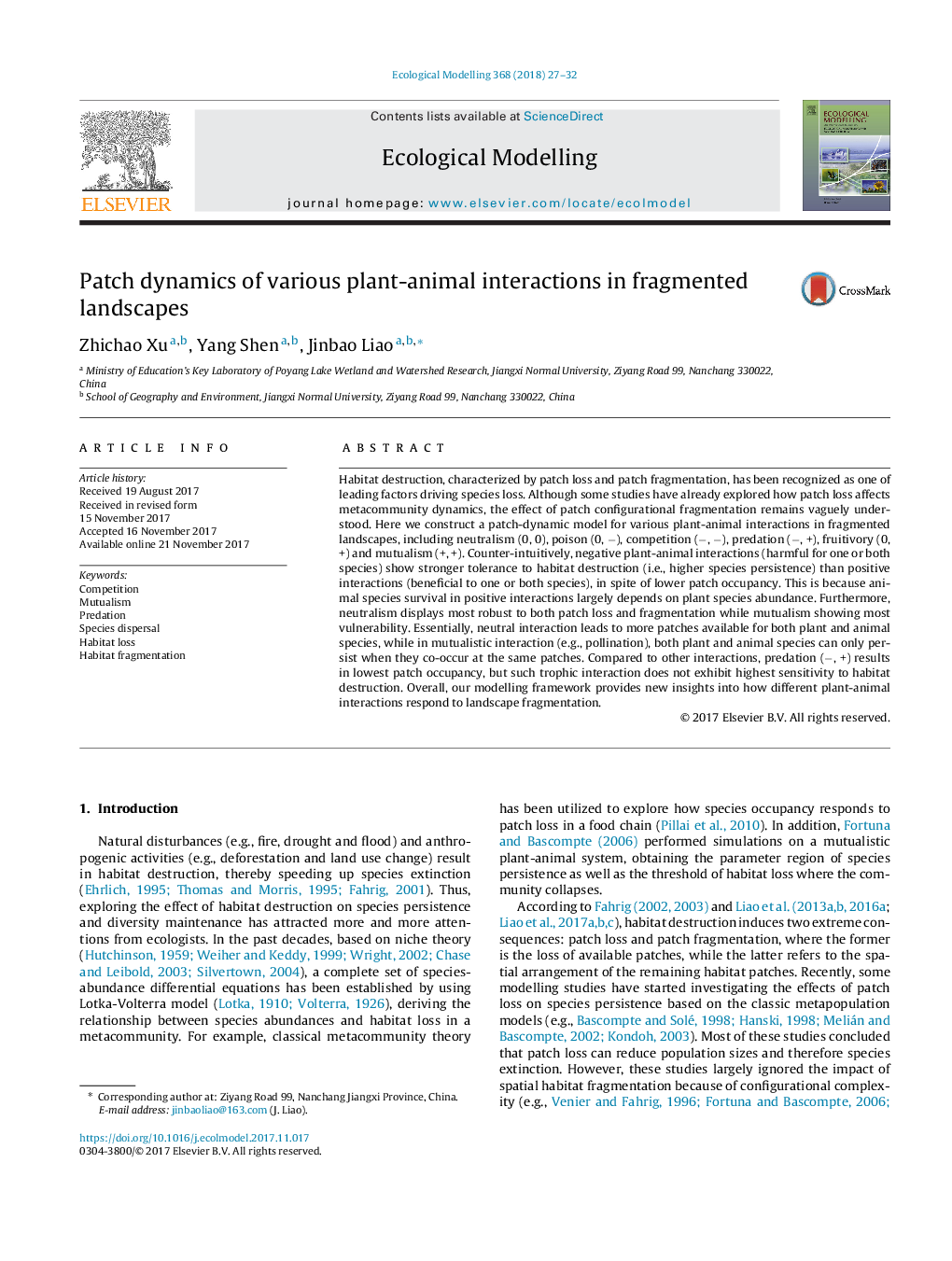| Article ID | Journal | Published Year | Pages | File Type |
|---|---|---|---|---|
| 8846127 | Ecological Modelling | 2018 | 6 Pages |
Abstract
Habitat destruction, characterized by patch loss and patch fragmentation, has been recognized as one of leading factors driving species loss. Although some studies have already explored how patch loss affects metacommunity dynamics, the effect of patch configurational fragmentation remains vaguely understood. Here we construct a patch-dynamic model for various plant-animal interactions in fragmented landscapes, including neutralism (0, 0), poison (0, â), competition (â, â), predation (â, +), fruitivory (0, +) and mutualism (+, +). Counter-intuitively, negative plant-animal interactions (harmful for one or both species) show stronger tolerance to habitat destruction (i.e., higher species persistence) than positive interactions (beneficial to one or both species), in spite of lower patch occupancy. This is because animal species survival in positive interactions largely depends on plant species abundance. Furthermore, neutralism displays most robust to both patch loss and fragmentation while mutualism showing most vulnerability. Essentially, neutral interaction leads to more patches available for both plant and animal species, while in mutualistic interaction (e.g., pollination), both plant and animal species can only persist when they co-occur at the same patches. Compared to other interactions, predation (â, +) results in lowest patch occupancy, but such trophic interaction does not exhibit highest sensitivity to habitat destruction. Overall, our modelling framework provides new insights into how different plant-animal interactions respond to landscape fragmentation.
Related Topics
Life Sciences
Agricultural and Biological Sciences
Ecology, Evolution, Behavior and Systematics
Authors
Zhichao Xu, Yang Shen, Jinbao Liao,
